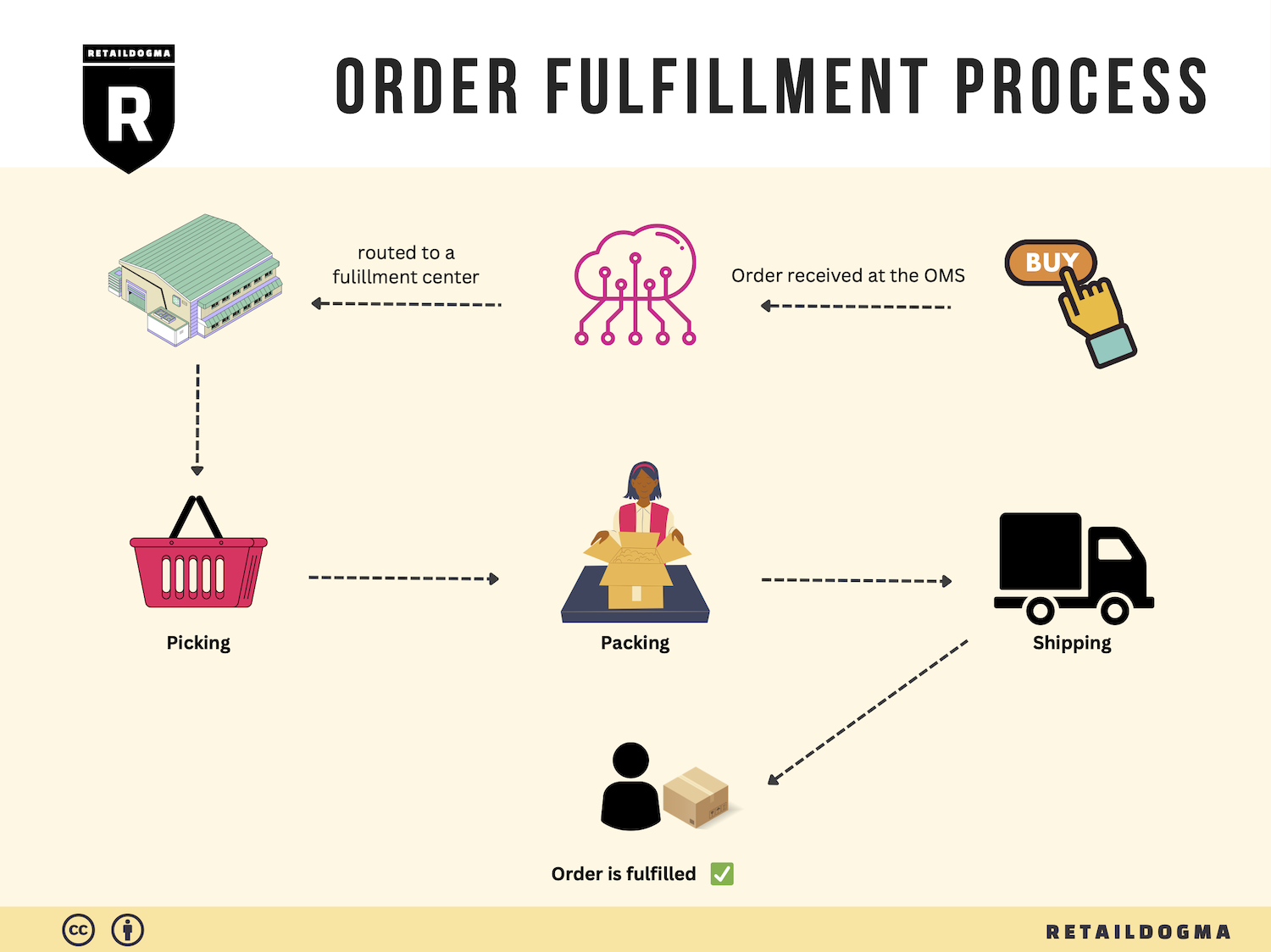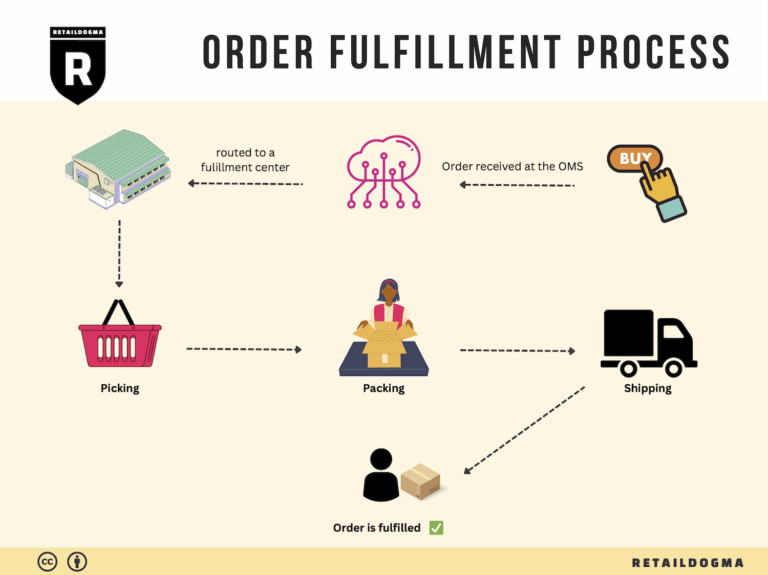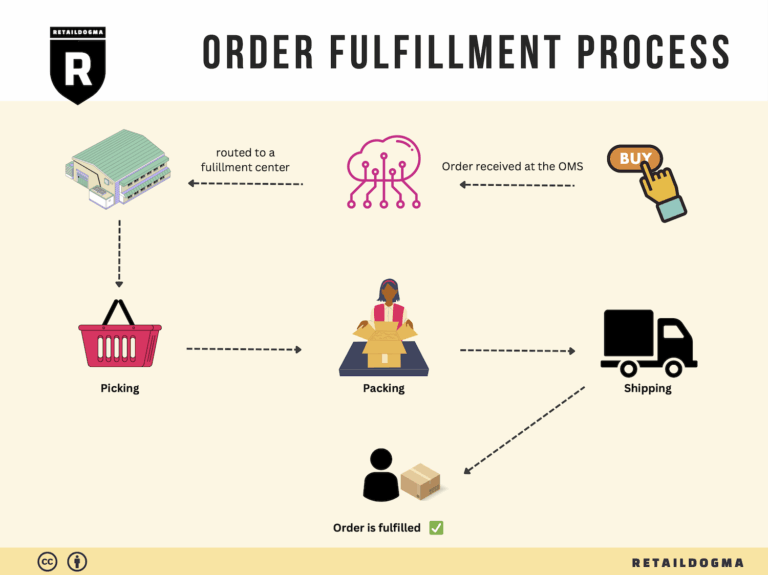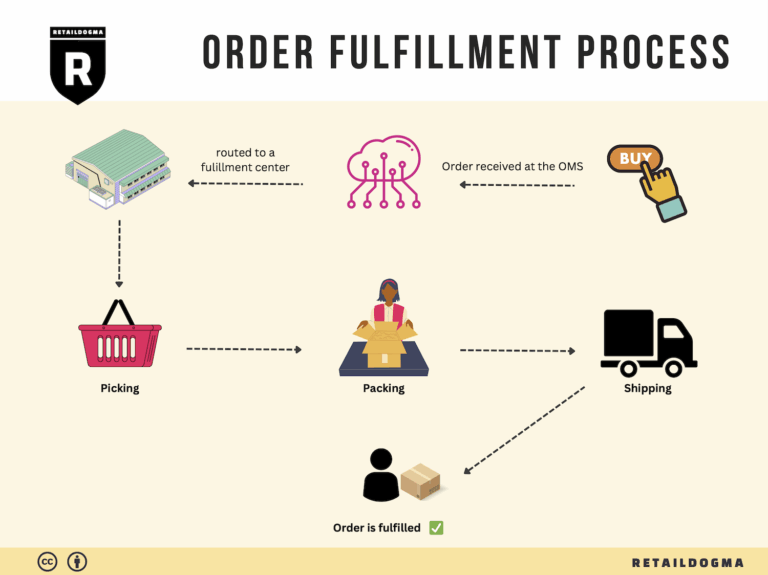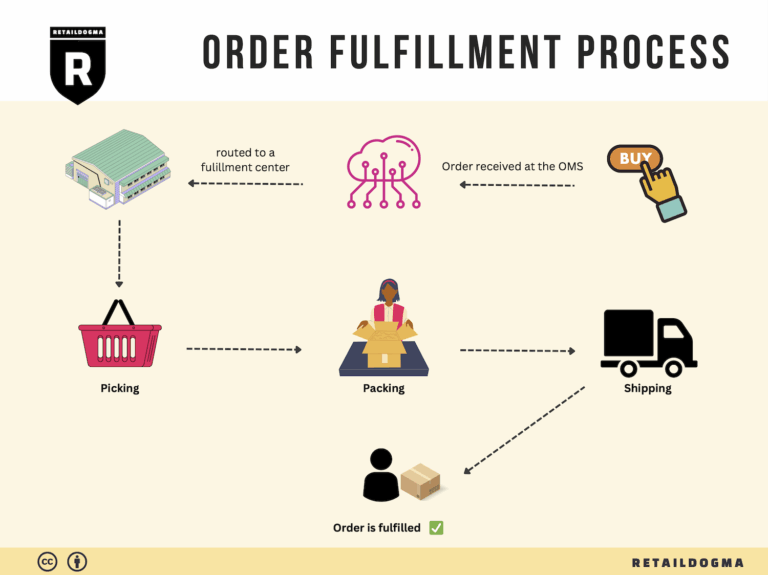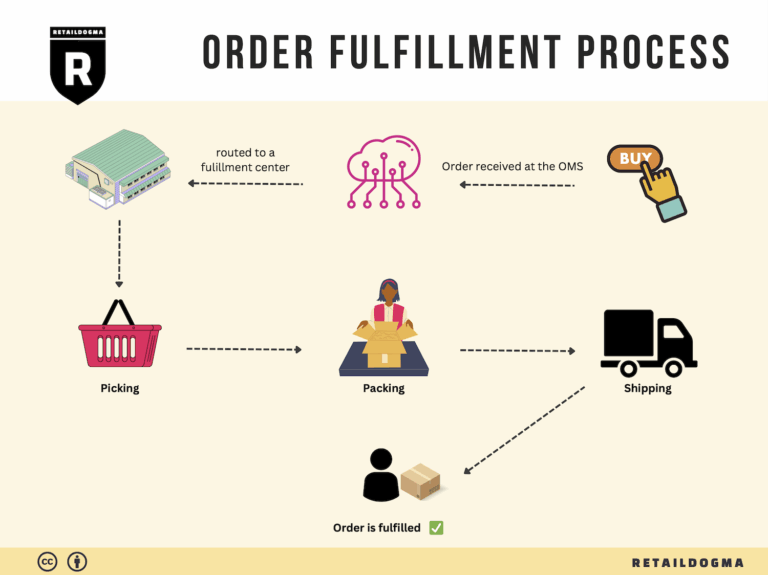Ecommerce Fulfillment Services: The Ultimate Guide (2025)
What is E-commerce Fulfillment? An Introduction for Growing Businesses
Understanding the Challenges of E-commerce Fulfillment
As an e-commerce business owner, you may find yourself overwhelmed by the sheer volume of orders you need to process daily. The excitement of growing sales can quickly turn into frustration as you juggle packing, shipping, and managing inventory. This is a common pain point for many online retailers: the logistical complexities of getting products into customers’ hands can distract you from focusing on strategic growth initiatives.
At its core, e-commerce fulfillment is the process of delivering a product to a customer after an order is placed. This includes everything from warehousing and inventory management to picking, packing, and shipping. As your business scales, handling these tasks in-house can become a daunting challenge. This guide is designed to demystify the fulfillment process and provide you with the knowledge needed to make informed decisions about your logistics.
What This Guide Covers
In this comprehensive guide, we will explore various fulfillment models that can support your growing business, such as third-party logistics (3PL) and Fulfillment by Amazon (FBA). We will outline the core services offered by fulfillment partners, including inventory storage, order processing, packaging, shipping, and returns management. Understanding these services will help you identify which aspects of fulfillment you can outsource to enhance efficiency and customer satisfaction.
Choosing the right fulfillment partner is crucial to your success. We will discuss key considerations to help you evaluate potential partners, including their technology capabilities, geographic reach, and pricing structures. With the right partner, you can streamline your operations and ensure that your customers receive their orders promptly.
Empowering Your Business
The ultimate goal of this guide is to empower you to make smart decisions about your logistics strategy. As you navigate the complexities of e-commerce fulfillment, understanding your options and the benefits of outsourcing will enable you to focus on what truly matters: growing your brand and building lasting relationships with your customers. By leveraging the expertise of fulfillment partners, you can reclaim valuable time and resources, allowing you to innovate and expand your business with confidence.
What You’ll Learn In This Guide
- What is E-commerce Fulfillment? An Introduction for Growing Businesses
- The Order Fulfillment Process: From ‘Buy’ Button to Customer’s Door
- Comparing Fulfillment Models: In-House vs. 3PL vs. Dropshipping
- A Deep Dive into Amazon FBA: Pros, Cons, and Who It’s For
- Core Services Offered by Fulfillment Centers
- How to Choose a Fulfillment Partner: A 6-Point Checklist
- Understanding Fulfillment Pricing: A Breakdown of Common Fees
- Frequently Asked Questions (FAQs) about Fulfillment
- Conclusion: Is Outsourcing Fulfillment the Right Move for Your Business?
- Important Disclaimer
The Order Fulfillment Process: From ‘Buy’ Button to Customer’s Door
1. Receiving Inventory
The order fulfillment process begins with receiving inventory. When a business acquires products from suppliers, those items must be checked in and accounted for at the fulfillment center. During this step, each item is verified against the purchase order to ensure accuracy, and any discrepancies are noted. This process often involves using SKU (Stock Keeping Unit) codes, which uniquely identify each product and facilitate tracking.
This step is crucial because it establishes the foundation for effective inventory management. Accurate receiving helps prevent stockouts or overstock situations, which can lead to lost sales or increased holding costs. By efficiently processing incoming inventory, businesses can ensure that they have the right products available for fulfillment, enhancing customer satisfaction.
2. Warehouse Storage
Once inventory is received, it is stored in a designated area within the fulfillment center. Warehouse storage involves organizing products in a manner that optimizes space and accessibility. This may include categorizing items by type, size, or sales velocity. Effective storage systems often utilize FIFO (First In, First Out) or LIFO (Last In, First Out) methods, depending on the nature of the products.
The importance of this step cannot be overstated. Proper warehouse storage minimizes the time spent locating products when orders come in. It also plays a significant role in maintaining inventory accuracy, as organized storage reduces the risk of misplaced items. Efficient warehouse management leads to faster order processing times, which are critical for meeting customer expectations regarding delivery speed.
3. Order Picking
As orders are placed on the e-commerce platform, the next step in the fulfillment process is order picking. This involves retrieving the items from their storage locations based on a pick list, which details the items ordered and their respective locations in the warehouse. The picking process can be manual or automated, depending on the fulfillment center’s technology and setup.
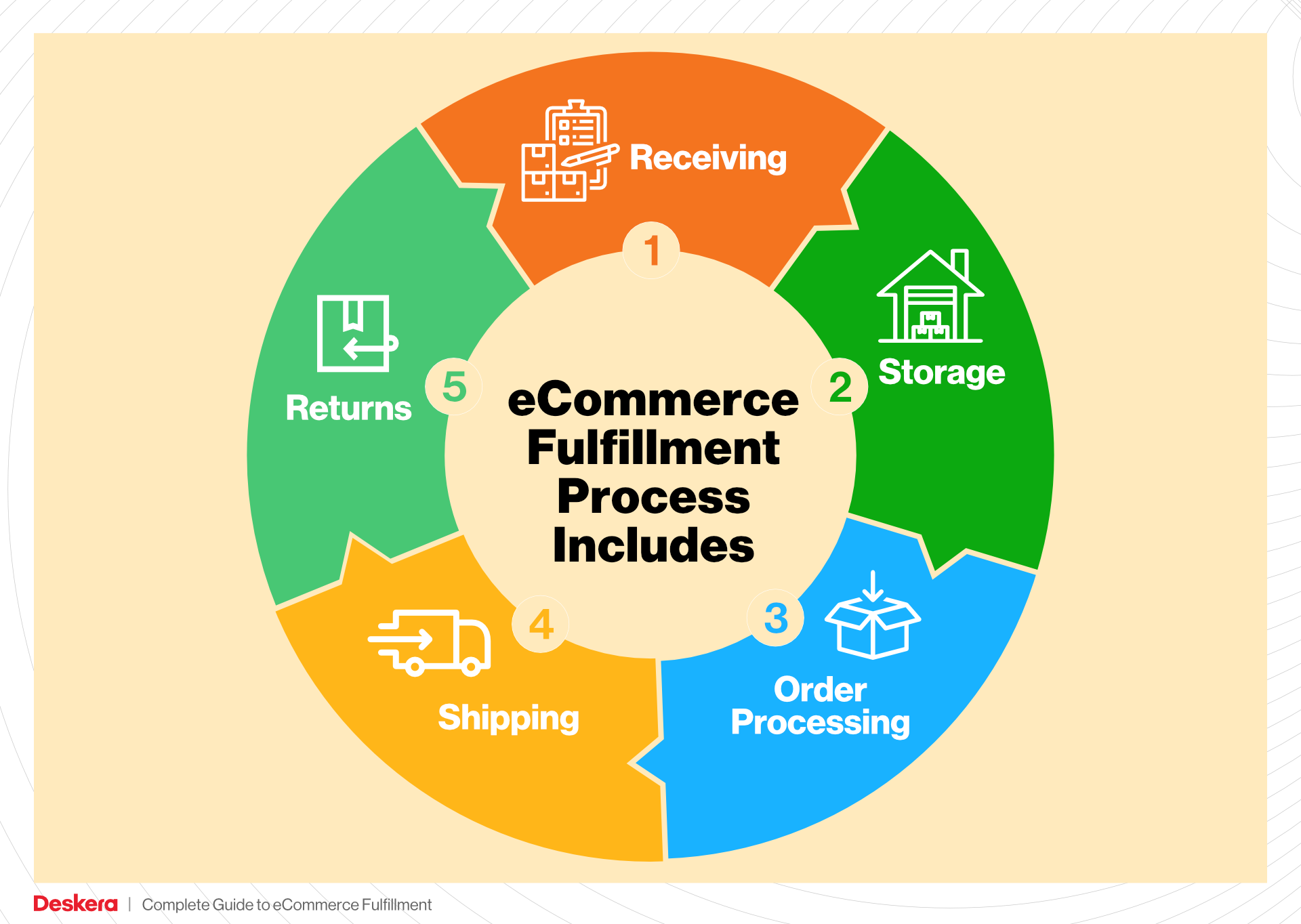
This step is essential because it directly influences the accuracy and efficiency of order fulfillment. Errors in picking can lead to incorrect shipments, resulting in customer dissatisfaction and costly returns. Streamlining the picking process, whether through training staff or implementing technology like pick-to-light systems, can significantly enhance operational efficiency and improve order accuracy.
4. Order Packing
After items are picked, they are moved to the order packing stage. Here, the selected products are carefully packaged for shipment. This step involves choosing the right box or envelope, adding appropriate packing materials to protect the items, and affixing shipping labels. Businesses often utilize branded packaging to enhance the customer experience and reinforce brand identity.
The packing process is vital for several reasons. Proper packaging not only protects products during transit but also affects shipping costs and delivery speed. Using the right-sized packaging can minimize dimensional weight charges imposed by carriers. Additionally, a well-packed order contributes to a positive unboxing experience, which can encourage repeat purchases and customer loyalty.
5. Shipping & Delivery
The final step in the order fulfillment process is shipping and delivery. Once orders are packed, they are scheduled for pickup by shipping carriers. Businesses must choose the appropriate carrier based on factors such as cost, delivery speed, and destination. Integrating tracking systems into the shipping process allows customers to monitor their orders in real-time.
This step is critical because it determines how quickly and reliably customers receive their products. Delays or issues in shipping can lead to negative reviews and loss of future sales. By partnering with reputable carriers and leveraging technology for tracking and notifications, businesses can enhance the customer experience and build trust. Furthermore, a strategic geographic footprint—by utilizing multiple fulfillment centers—can enable faster shipping times, aligning with customer expectations for rapid delivery.
By understanding and optimizing each of these five steps in the order fulfillment process, e-commerce businesses can significantly improve their operational efficiency and customer satisfaction. Outsourcing fulfillment to a third-party logistics provider (3PL) can further enhance these processes, allowing businesses to focus on growth and customer engagement.
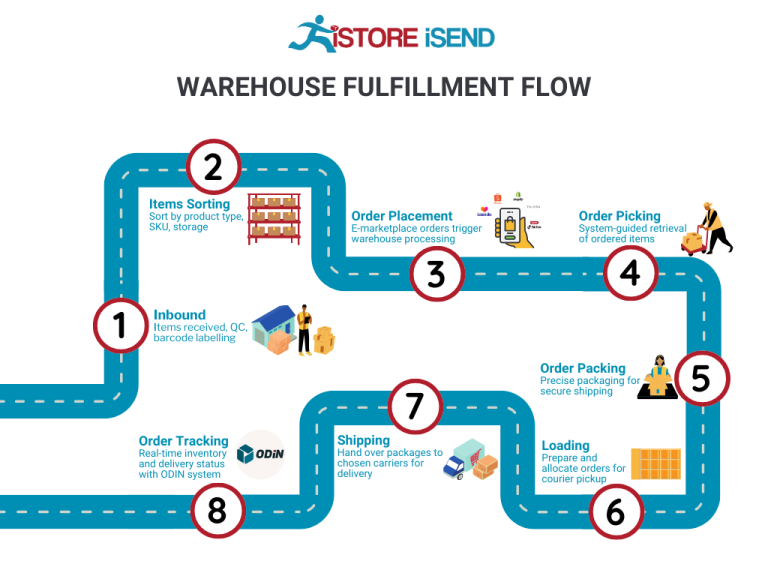
Comparing Fulfillment Models: In-House vs. 3PL vs. Dropshipping
Fulfillment Model Comparison
| Model | Who Handles Inventory | Best For (Business Stage) | Key Advantage | Key Disadvantage |
|---|---|---|---|---|
| In-House Fulfillment | The business owner | Startups to Mid-sized | Complete control over operations | High overhead costs and resource demands |
| Third-Party Logistics (3PL) | A third-party provider | Growth to Established | Scalability and reduced operational burden | Less control over logistics operations |
| Dropshipping | Supplier | Startups to Small-sized | Low startup costs and no inventory risk | Lower profit margins and reliance on suppliers |
In-House Fulfillment
In-house fulfillment involves managing all aspects of storage, packing, and shipping within your own facilities. This model is typically favored by startups and mid-sized businesses that prioritize control over their operations. By handling fulfillment internally, businesses can closely monitor inventory levels, ensure quality control, and customize packaging to align with their brand identity. However, this model comes with significant challenges. The overhead costs can be substantial, including warehousing expenses, staffing, and equipment purchases. Additionally, as order volumes grow, the complexity of logistics can overwhelm the internal team, diverting focus from core business activities such as marketing and product development. Thus, while in-house fulfillment offers control, it demands considerable resources and operational expertise.
Third-Party Logistics (3PL)
Third-party logistics (3PL) providers specialize in managing logistics functions for businesses, allowing them to outsource warehousing, inventory management, and order fulfillment. This model is ideal for businesses in the growth to established stages, as it offers scalability and flexibility to meet fluctuating demand without the burden of managing logistics internally. One of the key advantages of partnering with a 3PL is access to their extensive logistics network, which can lead to reduced shipping costs and faster delivery times due to strategically located warehouses. Additionally, 3PLs often provide advanced technology and analytics tools that help businesses optimize their fulfillment processes and improve overall efficiency. However, outsourcing to a 3PL also means relinquishing some control over the logistics operations, which may be a concern for some business owners who prefer a hands-on approach. It’s crucial to choose a reliable 3PL partner that aligns with your business needs and values.
Dropshipping
Dropshipping is a fulfillment model where the retailer does not hold inventory but instead relies on suppliers to ship products directly to customers. This model is particularly appealing to startups and small-sized businesses because it requires minimal upfront investment and eliminates the risks associated with unsold inventory. Retailers can focus on marketing and customer service without the logistical challenges of managing inventory or fulfillment. However, dropshipping comes with notable disadvantages, such as lower profit margins and a dependency on suppliers for product quality and shipping times. This reliance can lead to inconsistencies in order fulfillment, which may affect customer satisfaction. Additionally, as competition increases, differentiating your brand solely through dropshipping can be challenging. Therefore, while dropshipping provides an accessible entry point into e-commerce, it is essential to evaluate supplier reliability and product quality to ensure a positive customer experience.
Conclusion
Choosing the right fulfillment model is critical for scaling your e-commerce business. Each model—In-House Fulfillment, 3PL, and Dropshipping—has its unique set of advantages and disadvantages. In-house fulfillment offers control but at a high cost, while 3PL provides scalability and expertise at the expense of some operational oversight. Dropshipping allows for low-risk entry but can compromise profit margins and customer satisfaction. As your business evolves, it may be beneficial to reassess your fulfillment strategy to align with your growth goals and customer expectations.
A Deep Dive into Amazon FBA: Pros, Cons, and Who It’s For
Understanding Fulfillment by Amazon (FBA)
Fulfillment by Amazon (FBA) is a service that allows sellers to store their products in Amazon’s fulfillment centers. Amazon takes care of storage, packaging, shipping, and customer service on behalf of the sellers. This means that when a customer orders a product, Amazon handles the entire fulfillment process, ensuring the product reaches the customer promptly.
How FBA Works
-
Set Up Your FBA Account: Sellers need to create an Amazon Seller account and enroll in FBA. This includes selecting which products to fulfill through Amazon.
-
Send Inventory to Amazon: Once enrolled, sellers ship their products to Amazon’s designated fulfillment centers. Amazon provides guidelines on how to prepare and package the products.
-
Storage and Management: Amazon stores the inventory in its warehouses, where it is managed using sophisticated inventory management systems.
-
Order Fulfillment: When a customer places an order, Amazon picks the product from the warehouse, packs it, and ships it directly to the customer.
-
Customer Service and Returns: Amazon also handles customer inquiries, returns, and refunds, providing a seamless customer experience.
-
Payment: After the sale, Amazon collects payment from the customer and disburses the proceeds to the seller, minus the applicable fees.
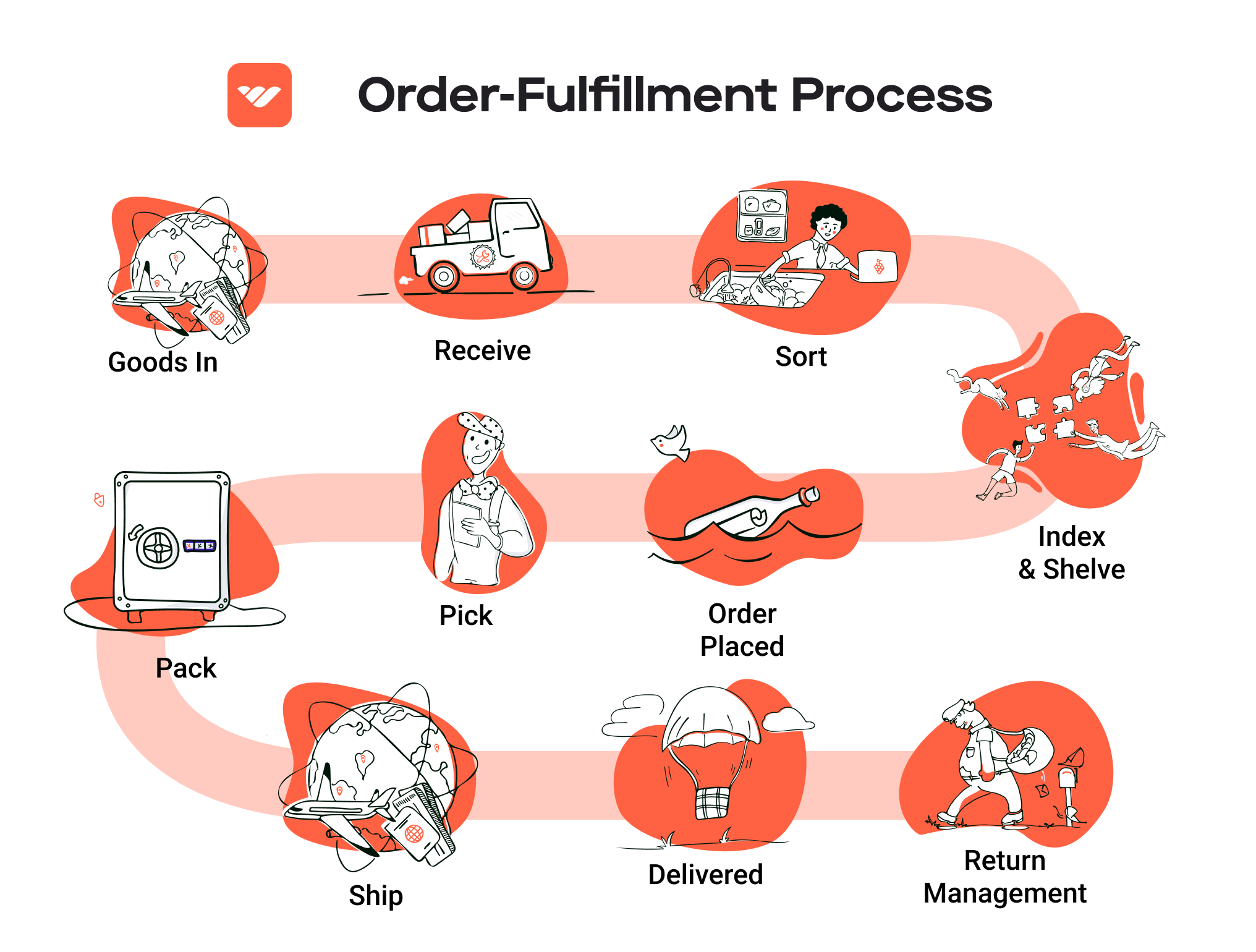
Pros of Using FBA
-
Prime Eligibility: Products fulfilled through FBA are eligible for Amazon Prime, which can significantly increase visibility and sales. Prime members often prefer items that can be delivered quickly and without additional shipping costs.
-
Customer Trust: Leveraging Amazon’s established brand and reputation can enhance customer trust. Many consumers feel more secure purchasing from sellers using FBA because of Amazon’s robust customer service and return policies.
-
Multi-Channel Fulfillment: FBA is not limited to sales on Amazon alone. Sellers can use FBA to fulfill orders from their own websites or other platforms, allowing them to maintain a centralized inventory and streamline logistics.
-
Scalability: As businesses grow, managing fulfillment can become increasingly complex. FBA allows sellers to scale their operations without the need to invest in warehousing and logistics infrastructure.
-
Advanced Logistics: Amazon’s extensive network of fulfillment centers and sophisticated logistics capabilities can lead to faster shipping times and reduced shipping costs, particularly for sellers who utilize multiple fulfillment centers across various regions.
-
Analytics and Reporting: Sellers have access to comprehensive reporting tools that provide insights into sales trends, inventory levels, and fulfillment performance, helping them make informed business decisions.
Cons of Using FBA
-
High Fees: FBA comes with various fees, including storage fees for inventory held in Amazon’s warehouses and fulfillment fees for each order processed. These costs can add up quickly, particularly for sellers with low-margin products.
-
Strict Inventory Rules: Amazon has stringent inventory management policies, including requirements for product preparation and labeling. Non-compliance can lead to additional fees or even the removal of inventory.
-
Commingling Risks: FBA operates on a commingled inventory model, meaning that sellers’ products may be mixed with those of other sellers in the same fulfillment center. This can lead to issues such as receiving returns that belong to other sellers or facing counterfeit concerns.
-
Limited Control: By outsourcing fulfillment to Amazon, sellers relinquish a degree of control over the fulfillment process. This can be challenging for brands that prioritize specific packaging or branding requirements.
-
Dependence on Amazon’s Policies: Sellers must adhere to Amazon’s constantly changing policies and guidelines. Any changes can impact their business operations, inventory management, and profitability.
-
Potential for Inventory Storage Limits: Amazon may impose limits on the amount of inventory sellers can store in their fulfillment centers, particularly during peak seasons. This can restrict sellers’ ability to stock popular items.
Who is FBA Best For?
Fulfillment by Amazon is particularly beneficial for:
-
Small to Medium-Sized Businesses: Companies that lack the resources or infrastructure to manage their own fulfillment can greatly benefit from the convenience and efficiency of FBA.
-
New Sellers: Entrepreneurs just starting out can leverage Amazon’s vast customer base and logistical expertise to establish their brand without the overhead of handling fulfillment themselves.
-
Sellers with High Volume: Businesses that have the potential for high sales volume can take advantage of Amazon’s efficient logistics network to scale quickly.
-
Brands Focused on Customer Experience: Companies that prioritize customer service and swift delivery will find FBA aligns well with their goals, as Amazon’s fulfillment capabilities enhance customer satisfaction.
-
Multi-Channel Sellers: Businesses selling on multiple platforms can benefit from the centralized inventory management and fulfillment capabilities that FBA offers.
In conclusion, while FBA presents numerous advantages, including increased sales potential and reduced logistical burdens, it also has its drawbacks, such as high fees and strict policies. Careful consideration of these factors can help e-commerce entrepreneurs determine if FBA is the right fit for their business model and growth strategy.
Core Services Offered by Fulfillment Centers
Inventory Management & Warehousing
Inventory management and warehousing form the backbone of fulfillment services, allowing e-commerce businesses to store their products securely and manage stock levels effectively. Fulfillment centers offer dedicated warehousing solutions that are designed to optimize storage space and ensure easy access to inventory.
What It Is: This service includes the storage of products in a secure facility, where inventory levels are monitored and managed in real time. Fulfillment centers utilize advanced inventory management systems that provide visibility into stock levels, helping businesses to understand when to reorder products and avoid stockouts or overstock situations.
Benefits: For e-commerce businesses, effective inventory management reduces the risk of tying up capital in excess stock and minimizes costs associated with storage and handling. By outsourcing warehousing, companies can free up physical space, reducing the need for costly real estate and allowing them to focus on core business activities like marketing and product development. Additionally, the technology used by fulfillment centers enhances forecasting accuracy, enabling businesses to respond more swiftly to changing market demands.
Pick and Pack Services
The pick and pack service is a crucial aspect of the order fulfillment process, ensuring that products are accurately selected and packaged for shipping. This service is designed to streamline the logistics involved in fulfilling customer orders, ultimately enhancing the customer experience.
What It Is: When an order is placed, fulfillment staff at the center retrieve the specific items from storage (picking) and then package them appropriately for shipment (packing). This process can involve choosing the right shipping materials, applying labels, and ensuring the products are securely packed to prevent damage during transit.
Benefits: Outsourcing pick and pack services allows e-commerce businesses to maintain a high level of accuracy and efficiency in order processing. Fulfillment centers typically have systems in place that minimize errors, ensuring that customers receive the correct items promptly. This not only boosts customer satisfaction but also reduces the costs associated with returns due to shipping errors. Furthermore, it allows businesses to scale their operations easily, as fulfillment centers can handle fluctuations in order volume without the need for additional staffing or resources.
Kitting and Assembly
Kitting and assembly are specialized services offered by fulfillment centers that can significantly enhance the product offering of e-commerce businesses. These services involve grouping individual items into a ready-to-ship package or assembling products before they are shipped to customers.
What It Is: Kitting refers to the process of combining multiple products into a single package, while assembly involves putting together components to create a finished product. This can include anything from bundling items for promotional offers to constructing complex products that require multiple parts.
Benefits: By utilizing kitting and assembly services, businesses can create unique product offerings that cater to specific customer needs, enhancing their competitive edge. These services also streamline the order fulfillment process by reducing the number of individual items that need to be picked and packed. As a result, this can lead to faster order processing times and a more efficient workflow. Additionally, kitting can simplify inventory management by consolidating multiple SKUs into one, reducing the complexity of tracking and reordering.
Returns Management (Reverse Logistics)
Returns management, or reverse logistics, is an essential service that addresses the complexities involved in handling returned items. An effective returns process is crucial for maintaining customer satisfaction and loyalty in the e-commerce landscape.
What It Is: This service encompasses the entire process of returning products from customers back to the fulfillment center. It involves receiving the returned items, inspecting them for quality, restocking them if they are in sellable condition, and managing any necessary exchanges or refunds.
Benefits: A well-structured returns management system can significantly enhance customer trust and satisfaction, as customers are more likely to complete purchases when they know they can return items easily. Fulfillment centers streamline this process, reducing the time and resources e-commerce businesses need to allocate to handle returns. Furthermore, effective returns management can help recover value from returned products by efficiently restocking items or repackaging them for resale. This service ultimately contributes to improved cash flow and inventory turnover, allowing businesses to maintain a healthy bottom line while keeping their customers happy.
In summary, the core services offered by fulfillment centers—inventory management and warehousing, pick and pack services, kitting and assembly, and returns management—are designed to streamline operations, reduce costs, and enhance customer satisfaction for e-commerce businesses. By leveraging these services, companies can focus on growth and strategic initiatives rather than getting bogged down in the complexities of order fulfillment.
How to Choose a Fulfillment Partner: A 6-Point Checklist
Location & Warehouse Network
Why It’s Important:
The geographic location of a fulfillment partner’s warehouses is crucial for efficient shipping and customer satisfaction. A well-distributed network can significantly reduce shipping times and costs, especially if your customer base is spread across different regions.
Questions to Ask:
– How many fulfillment centers do you operate, and where are they located?
– Can you provide shipping estimates for various regions?
– How do you manage inventory across multiple locations?
– Do you have plans for expanding your warehouse network in the near future?
Technology & Integrations
Why It’s Important:
In today’s e-commerce landscape, leveraging technology is vital for streamlining operations. A partner with robust technology can automate processes, provide real-time inventory tracking, and seamlessly integrate with your existing systems.
Questions to Ask:
– What fulfillment management software do you use, and how does it integrate with our e-commerce platform?
– Can you provide real-time tracking for both inventory and shipments?
– Are there analytics tools available to help us monitor performance and make data-driven decisions?
– How frequently do you update your technology, and what are your plans for future upgrades?
Specializations (e.g., Cold Storage, Oversized Items)
Why It’s Important:
Different businesses have unique requirements. If you sell perishable goods, oversized items, or products that require special handling, you need a partner that specializes in those areas to ensure compliance and efficiency.
Questions to Ask:
– Do you have specific facilities for temperature-sensitive items or oversized products?
– What protocols do you have in place for handling specialized inventory?
– Can you provide examples of how you have successfully managed similar products for other clients?
– What certifications or compliance measures do you have in place for specialized storage?
Scalability & Capacity
Why It’s Important:
As your business grows, your fulfillment needs will evolve. A good fulfillment partner should be able to scale operations in line with your growth, helping you avoid bottlenecks that can impact customer satisfaction.
Questions to Ask:
– How do you handle peak seasons or unexpected surges in order volume?
– What is your capacity for scaling operations, and how quickly can you adapt to our changing needs?
– Are there limitations on the types of products or order volumes you can manage?
– Can you provide case studies or examples of how you’ve scaled for other clients?
Pricing and Contracts
Why It’s Important:
Understanding the pricing structure and contract terms is essential to ensure that your fulfillment costs remain manageable as you grow. Hidden fees can erode your profit margins, so clarity is key.
Questions to Ask:
– Can you provide a detailed breakdown of your pricing model, including any additional fees?
– What are the terms of your contracts? Are there long-term commitments required?
– How do you handle pricing changes due to fluctuations in shipping rates or other operational costs?
– Are there options for performance-based pricing or discounts for higher volumes?
Customer Support & Reviews
Why It’s Important:
Exceptional customer support can make or break your fulfillment experience. A responsive and knowledgeable support team can help resolve issues quickly, ensuring minimal disruption to your operations.
Questions to Ask:
– What support channels do you offer (e.g., phone, email, live chat), and what are your response times?
– Can you provide references or case studies from current or past clients?
– How do you handle fulfillment errors or customer complaints?
– What measures do you have in place to ensure continuous communication and updates during the fulfillment process?
By carefully evaluating potential fulfillment partners against this checklist, you can make a more informed decision that aligns with your business goals and customer expectations. Each of these points plays a critical role in ensuring that your fulfillment operations are efficient, cost-effective, and scalable as you grow.
Understanding Fulfillment Pricing: A Breakdown of Common Fees
Initial Setup Fees
When partnering with a third-party logistics provider (3PL), businesses often encounter initial setup fees. These fees cover the costs associated with integrating your systems with the 3PL’s technology, setting up your account, and configuring any necessary software. The setup process may involve:
- Onboarding: Training sessions for your team on how to use the 3PL’s platform.
- Inventory Integration: Uploading your product catalog, including SKUs, descriptions, and images.
- Custom Configuration: Tailoring the fulfillment process to meet your specific business needs, which may include custom packing options or unique shipping requirements.
Setup fees can vary widely depending on the complexity of your operation and the 3PL’s capabilities. It’s essential to ask for a detailed breakdown of these costs upfront to avoid surprises.
Receiving Fees
Receiving fees are charged when your inventory arrives at the 3PL’s warehouse. These fees cover the labor and resources required to unload, inspect, and store your products. Typically, receiving fees are calculated based on:
- Volume of Inventory: Some 3PLs charge per pallet, while others may charge based on the number of items received.
- Complexity of Receiving: If your products require special handling, such as inspection or repackaging, additional fees may apply.
Understanding how receiving fees are structured is crucial, as they can impact your overall fulfillment costs. Ensure you clarify the process and any potential additional charges before signing a contract.
Storage Fees (per pallet/bin)
Storage fees are recurring costs associated with keeping your inventory in the 3PL’s warehouse. These fees are typically calculated based on the amount of space your products occupy, often measured in pallets or bins. Factors that influence storage fees include:
- Duration of Storage: Many 3PLs charge monthly fees, so the longer your products remain in their warehouse, the higher the costs.
- Type of Storage: Specialized storage conditions, such as climate control, may incur higher fees.
To manage storage costs effectively, it’s advisable to maintain a healthy inventory turnover rate and regularly review your stock levels. Some 3PLs also offer tiered pricing structures, so be sure to ask about potential discounts for larger volumes.
Pick & Pack Fees (per item/order)
Pick and pack fees are incurred each time an order is processed. These fees cover the labor involved in selecting the items from the warehouse and packing them for shipment. The calculation of pick and pack fees usually depends on:
- Number of Items: Most 3PLs charge per item picked and packed. For example, if an order contains three items, you may be charged for each item picked.
- Order Complexity: If an order requires special packing materials or processes (e.g., kitting), additional fees may apply.
Understanding the pick and pack fee structure is vital for budgeting your fulfillment costs, especially if you anticipate fluctuations in order volume.
Shipping Fees
Shipping fees are perhaps the most variable component of fulfillment pricing and can significantly impact your overall costs. These fees are determined by several factors:
- Shipping Carrier Rates: Different carriers have distinct pricing structures based on weight, dimensions, and delivery speed.
- Shipping Zones: The distance between the warehouse and the customer’s location affects shipping costs, with longer distances typically incurring higher fees.
- Service Level: Expedited shipping options (e.g., overnight or two-day delivery) will generally come at a premium compared to standard shipping rates.
To optimize your shipping costs, consider negotiating rates with your 3PL or exploring options like zone skipping or consolidating shipments.
Tips for Getting an Accurate Quote
-
Provide Detailed Information: Share comprehensive details about your inventory, order volume, and specific fulfillment needs with potential 3PL partners. This transparency will help them provide a more accurate quote.
-
Ask for Itemized Quotes: Request an itemized breakdown of all fees associated with fulfillment. This will help you identify any hidden costs and allow for better comparison between providers.
-
Inquire About Discounts: Don’t hesitate to ask about volume discounts or promotional offers, especially if you plan to scale your operations.
-
Understand Terms and Conditions: Carefully review the contract terms, including any clauses related to fee adjustments, to ensure you are aware of any potential changes in costs over time.
-
Consider a Trial Period: If possible, negotiate a trial period with the 3PL to evaluate their services and pricing before committing long-term.
By understanding these common fees and seeking clarity from your 3PL partner, you can make informed decisions that will help you scale your e-commerce business effectively.
Frequently Asked Questions (FAQs) about Fulfillment
1. What is outsourced fulfillment?
Outsourced fulfillment involves hiring a third-party logistics provider (3PL) to handle various aspects of the order fulfillment process, such as warehousing, picking, packing, and shipping products to customers. This allows e-commerce businesses to focus on core activities while leveraging the expertise and infrastructure of the 3PL.
2. What services do third-party logistics providers (3PLs) typically offer?
3PLs generally provide a range of services, including inventory storage, order picking and packing, shipping coordination, returns processing, and sometimes additional services like kitting, branded packaging, and advanced technology for order and inventory management.
3. What’s the difference between a warehouse and a fulfillment center?
While both warehouses and fulfillment centers store products, their primary functions differ. A warehouse is mainly for storage and inventory management, whereas a fulfillment center is designed for processing orders and shipping them directly to customers. Fulfillment centers often have advanced technology and systems to efficiently handle order processing and logistics.
4. How much do fulfillment services cost?
The cost of fulfillment services can vary widely based on several factors, including order volume, storage space required, shipping distances, and additional services needed. Typically, costs include fees for storage, picking and packing, shipping, and any value-added services. It’s essential to obtain detailed pricing from potential 3PL partners to understand the overall costs involved.
5. What are the benefits of outsourcing fulfillment?
Outsourcing fulfillment can lead to significant benefits, including reduced overhead costs, access to advanced logistics technology, the ability to scale operations quickly, improved shipping times, and the freeing up of resources to focus on core business functions like marketing and product development.
6. How do I choose the right 3PL for my business?
When selecting a 3PL, consider factors such as their experience in your industry, the range of services they offer, technology capabilities, shipping networks, customer support, and pricing structure. It’s also helpful to read reviews and case studies from other businesses that have used their services.
7. Can I customize my fulfillment services?
Yes, many 3PLs offer customizable fulfillment solutions tailored to your specific business needs. This can include personalized packaging, special handling instructions, and integration with your e-commerce platform to streamline the order process.
8. What happens if I need to change my fulfillment strategy?
If your business needs to adjust its fulfillment strategy, most 3PLs are flexible and can accommodate changes in order volume, shipping requirements, or service offerings. It’s crucial to communicate your needs with your 3PL partner to ensure a seamless transition.
9. How does outsourced fulfillment improve customer satisfaction?
By utilizing a 3PL, businesses can benefit from faster shipping times, reliable order tracking, and efficient returns processing. These improvements help meet customer expectations, reduce cart abandonment rates, and ultimately enhance overall customer satisfaction.
10. What technologies do 3PLs use to manage fulfillment?
3PLs typically employ advanced technologies such as inventory management software, order processing systems, real-time tracking tools, and data analytics platforms. These tools help optimize operations, provide insights into inventory levels, and ensure timely deliveries, which can be critical for scaling your business effectively.
Conclusion: Is Outsourcing Fulfillment the Right Move for Your Business?
The Case for Outsourcing Fulfillment
Outsourcing your fulfillment process can be a game changer for your e-commerce business. By leveraging the expertise of a third-party logistics provider (3PL), you can save valuable time, enabling you to focus on core activities that drive growth, such as product development and marketing. As your order volume increases, managing logistics can quickly become overwhelming. Outsourcing fulfillment allows you to scale operations seamlessly, ensuring that you can meet customer demands without sacrificing service quality.
Moreover, 3PLs bring extensive industry knowledge and established networks, offering efficiencies that are often unattainable in-house. They have the infrastructure to handle large volumes, negotiate better shipping rates, and provide advanced technology solutions that enhance visibility into your inventory and order status. This expertise not only streamlines your operations but also helps improve customer satisfaction through faster and more reliable shipping options.
However, it’s crucial to choose the right fulfillment partner. A strong partnership will align with your business goals and values, providing the support necessary for your growth trajectory. A well-chosen 3PL can transform your logistics from a cost center into a strategic asset that drives revenue.
As you consider whether outsourcing fulfillment is the right move for your business, take the time to audit your current shipping and logistics processes. Assess whether you’re equipped to handle your growing demands or if a fulfillment partner could be the key to unlocking your business’s potential. By making an informed decision, you can ensure that your business not only survives but thrives in the competitive e-commerce landscape.
Important Disclaimer
⚠️ Important Disclaimer
The information in this guide is for educational purposes. Fulfillment services, pricing, and platform features change frequently. Always conduct your own due diligence and consult with providers directly before making business decisions.
